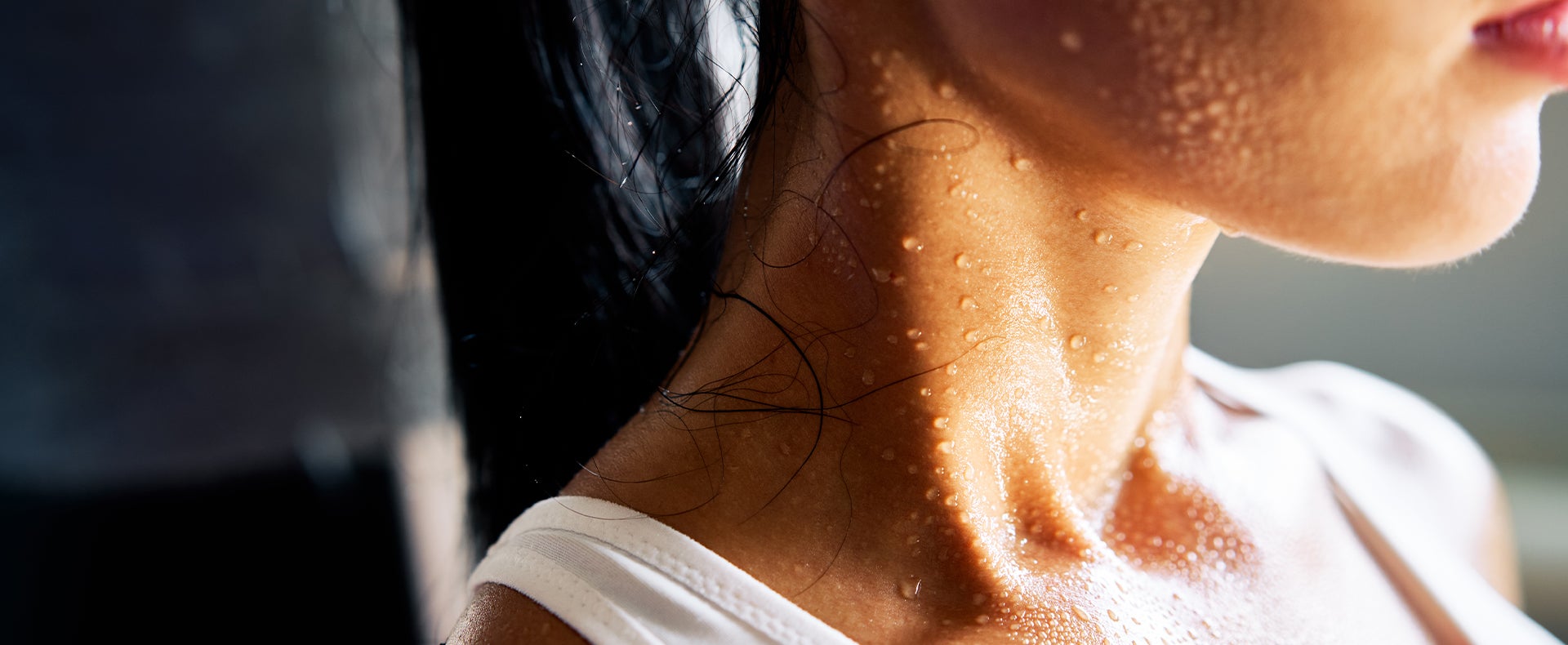Just like we all have a unique pattern of lines and ridges that create our fingerprints, every person has a different arrangement of sweat glands throughout their skin. This unique pattern creates your very own “sweat fingerprint.”

What’s Your Sweat Fingerprint?
Life Stories, SweatEveryone sweats differently. We all have our own unique way of sweating. That’s why when you start using a sauna, it can feel confusing. You may find yourself wondering, “How much should I expect to sweat?” “Why am I not sweating much?” “Why am I sweating so much?” “How do I know it’s working?” “Why do I sweat differently than my friend or family member?”
Your body has two primary types of sweat glands. Your sweat fingerprint is your own special combination of those types, plus the size, shape, location, and frequency of each varies from person to person. Your unique genetic sweat gland formatting affects the look, feel, amount, content, and even smell of your own sweat. The more sweat glands you have, the more you sweat. The average number of sweat glands in the human body is 3 million.
Taste buds are another example of how genetics impact the unique way our bodies experience the physical environment. We all have a different number and type of taste buds, which is why we all have such different responses to food we eat. The average person has 2-4,000 taste buds, and as we age that number decreases along with our ability to taste. About ¼ of us are “supertasters” with an abundance of taste buds that increase sensitivity and the ability to discern distinct flavors and seasoning.1 “Nontasters” have fewer and of course don’t notice taste as intensely. So, the same way food tastes different to each of us, so also do we experience saunas differently because of our unique cellular make up!
And isn’t it interesting that even your actual fingerprint itself sweats!? Yes, it’s one way that drug tests are performed.2 Small openings in the ridges that form your fingerprints are actually sweat pores connected to ducts of sweat glands under the skin. The science of poroscopy examines the characteristics of sweat pores on fingerprints to make a personal identification. (So, it’s not just our palms that get sweaty when we’re nervous!)
Isn’t all sweat the same? Well, actually, no it isn’t. Two different sweat glands produce two different kinds of sweat in your body. And, two other types of glands contribute to your unique sweat composition as well. Different conditions trigger different kinds of sweat.
“Normal” Sweat Comes from the Eccrine Glands
When the body gets hot, sweat releases from the eccrine glands to help cool the body. This is the sweat that comes to mind when we think about exercise and regulating our body temperature. The eccrine glands open directly onto the surface of your skin and produce non-smelly, watery sweat with a bit of salt and a few lipids.3 Our bodies contain anywhere from 2 to 4 million sweat glands--the majority are eccrine glands. They cover our entire body, and we tend to have more of them in our palms, soles, forehead and armpits.
“Stress Sweat” Comes from the Apocrine Glands
When our bodies react to emotion like stress, anxiety or excitement, sweat releases from the apocrine glands. (Your underarms secrete about 30 times more sweat when you’re stressed.) These glands open into the hair follicle, then flow up to the skin’s surface and they excrete thicker, milky sweat that doesn’t evaporate as quickly and can get stinky.3 It’s richer in proteins, lipids, fats, and nutrients that feed the bacteria that live on our skin, which is what causes body odor. The apocrine glands are larger than eccrine glands and develop in areas dense with hair follicles like your scalp, underarms and private parts.
Genetics isn’t the only thing affecting how you sweat. It’s a complex equation that also includes gender, age, environment, weight, hydration, nutrition, health, and fitness level. All these factors have variables, too. For instance, a study in the Journal of Applied Physiology found sweat rates depend on heat production based on factors like body size and environment, not cardiac fitness. In other words, a bigger body has to work harder, so likely sweats more.4 And a recent small Australian study agreed with that, saying that body mass rather than sex is a stronger factor in how much we sweat.5 Another study found that heat acclimation improves sweating functions.6 Another variable is physical fitness: the more fit you are, the more efficiently you sweat because the body sweats earlier in a workout at a lower body temperature, cooling the body faster.
So, as you evaluate the way your own body is sweating, know that it is possible you may or may not have 2 million or 4 million sweat glands, and your body has its own unique blend of eccrine and apocrine glands of varying sizes. It’s important not to compare yourself to others but rather listen to your own body. Be curious about the way you sweat, when you sweat, how much you sweat, and what it looks like on your skin. What parts of your body perspire more? With so many factors to consider, remember the amount you sweat is not a measure of how effectively you sweat; it may be more a measure of the number, size, and place of sweat glands you have—it’s your very own sweat fingerprint.
Discover Your Sauna
Referenzen
1 Hayes JE, Keast RS. Two decades of supertasting: where do we stand?. Physiol Behav. 2011;104(5):1072-1074. doi:10.1016/j.physbeh.2011.08.003
2 Drug screening using the sweat of a fingerprint: lateral flow detection of Δ9-tetrahydrocannabinol, cocaine, opiates and amphetamine, Journal of Analytical Toxicology, Volume 43, Issue 2, March 2019, Pages 88–95, https://doi.org/10.1093/jat/bky068
3 Baker LB. Physiology of sweat gland function: The roles of sweating and sweat composition in human health. Temperature (Austin). 2019;6(3):211-259. Published 2019 Jul 17. doi:10.1080/23328940.2019.1632145
4 Cramer MN, Jay O. Explained variance in the thermoregulatory responses to exercise: the independent roles of biophysical and fitness/fatness-related factors. J Appl Physiol (1985). 2015 Nov 1;119(9):982-9. doi: 10.1152/japplphysiol.00281.2015. Epub 2015 Aug 27. PMID: 26316511; PMCID: PMC4628991.
5 Sean R. Notley, Joonhee Park, Kyoko Tagami, Norikazu Ohnishi, Nigel A. S. Taylor. Variations in body morphology explain gender differences in thermoeffector function during compensable heat stress. Experimental Physiology, 2017; DOI: 10.1113/EP086112
6 Foster J, Hodder SG, Lloyd AB, Havenith G. Individual Responses to Heat Stress: Implications for Hyperthermia and Physical Work Capacity. Front Physiol. 2020;11:541483. Published 2020 Sep 11. doi:10.3389/fphys.2020.541483


